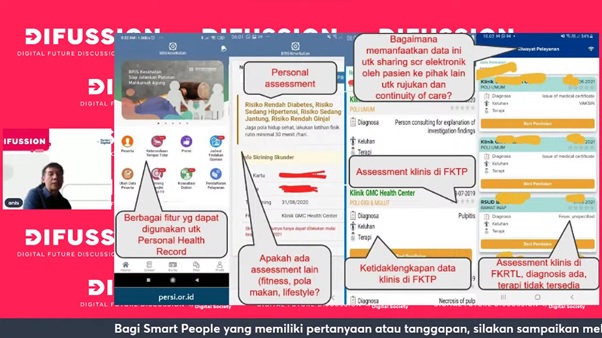
The advent of the digital era has revolutionized societal behaviors and routines. The convenience of online transactions, the seamless flow of information, and the erasure of distance and time constraints have propelled us into a digital age.
According to a survey conducted by the Association of Internet Service Providers in Indonesia in 2023, there were 215 million Internet users in Indonesia alone. The ramifications of digitization, both positive and negative, including digital habits, are undeniable.
Addressing this issue, the Center for Digital Society (CfDS) at the UGM Faculty of Social and Political Sciences explored the topic in Diffusion #106 titled “Digital Well-being: Practical Steps to Maintaining Mental Balance” on Tuesday (Feb. 13).
“Digital technology significantly influences our well-being and shapes our understanding of leading a fulfilling life in an increasingly digital society. The general public is already familiar with digital well-being, evident in screen time tracking and reduction applications. However, their effectiveness remains uncertain,” remarked Rizka Herdiani, a researcher at CfDS.
She highlighted that the surge in digital exposure since the onset of the pandemic has led to the formation of new digital behaviors and routines.
One prevalent symptom is the fear of missing out (FOMO), particularly among avid internet users, especially the youth demographic. While FOMO is commonly perceived as an individual’s mindset, it can escalate into more serious conditions.
Experiencing anxiety when not in possession of a device or fearing missing out on information to the extent that it disrupts mental equilibrium is one example. This underscores the significance of comprehending digital well-being.
Regrettably, cultivating good digital habits still largely hinges on user conduct. Regulations and features implemented by digital platforms have yet to be entirely effective in discouraging unhealthy digital habits or offering adequate support.
“Users often find that disliked content persists despite setting preferences to avoid it. Hence, we cannot solely rely on applications; once again, it boils down to user responsibility. Nevertheless, digital platform companies should consider this,” added Herdiani.
Digital well-being extends beyond individual habits as users of the digital world. It encompasses how digitization or digital services can promote healthy practices in the community’s lifestyles.
Anis Fuad, a lecturer at the Faculty of Medicine, Public Health, and Nursing at UGM, elaborated on the strong influence of digitization on healthcare services. Previously, individuals typically endured long queues at healthcare facilities, but now, early registration through applications mitigates this inconvenience.
“Compelling research indicates that the internet is pivotal in fostering healthy lifestyles—for example, step counter apps, heart rate monitors, and sleep cycle reminders. Maintaining a healthy mindset and monitoring our mental well-being are becoming increasingly important. Measures like these are now integral aspects of health maintenance,” highlighted Fuad.
One noteworthy innovation introduced by BPJS Kesehatan is the Electronic Health Record (EHR) application, which facilitates the independent monitoring of individual medical records. This app allows individuals to track hospital visits, view health screening data, and assess potential health risks.
Emphasizing the realization of digital well-being is paramount in this digital age. Besides promoting healthy lifestyles, digital well-being aligns with the 17 Sustainable Development Goals, particularly Goal 3. The aspiration is for digitization to prompt society to prioritize mental and physical health by leveraging technological advancements.
Author: Tasya

